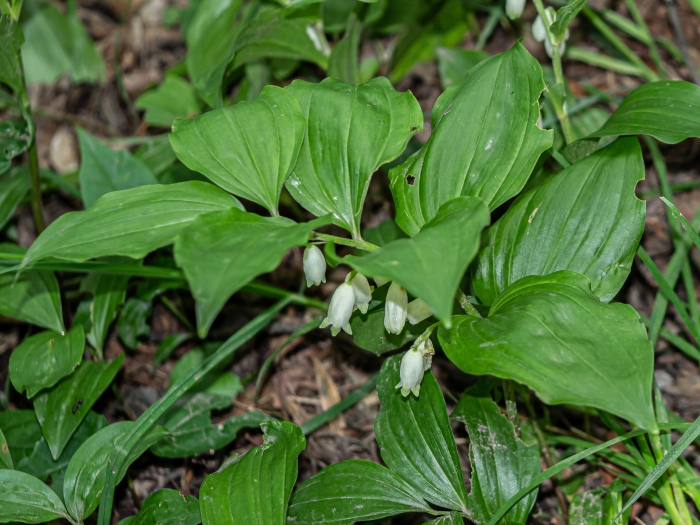Broadleaf Solomon’s Seal
(Polygonatum latifolium)
Broadleaf Solomon’s Seal (Polygonatum latifolium)
/
/

rainerburkard
CC BY 4.0
Image By:
rainerburkard
Recorded By:
Copyright:
CC BY 4.0
Copyright Notice:
Photo by: rainerburkard | License Type: CC BY 4.0 | License URL: http://creativecommons.org/licenses/by/4.0/ | Rights Holder: rainerburkard | Publisher: iNaturalist | Date Created: 2019-05-18T15:01:42-07:00 |
























Estimated Native Range
Summary
Polygonatum latifolium, commonly known as Broadleaf Solomon’s Seal, is a deciduous perennial herb native to shaded woodlands and forest margins across Europe and Asia, extending from Scandinavia to the Mediterranean and eastward into Siberia. It typically grows to a height and width of about 1 foot (0.3 meters), featuring arching stems and alternate, ovate leaves. The plant produces small, tubular greenish-white flowers that dangle from the leaf axils in late spring to early summer, which are modestly showy and often followed by blue-black berries in the fall.
Broadleaf Solomon’s Seal is valued for its graceful form and the subtle beauty of its flowers, making it a popular choice for woodland gardens, shade gardens, and naturalized areas. It is also appreciated for its low maintenance requirements and its ability to spread slowly to form colonies, which can be used effectively as ground cover. This plant prefers consistently moist, well-drained soils rich in organic matter and thrives in part shade to full shade. While generally pest-free, it can occasionally suffer from slug damage. It is also important to note that all parts of the plant are poisonous if ingested.CC BY-SA 4.0
Broadleaf Solomon’s Seal is valued for its graceful form and the subtle beauty of its flowers, making it a popular choice for woodland gardens, shade gardens, and naturalized areas. It is also appreciated for its low maintenance requirements and its ability to spread slowly to form colonies, which can be used effectively as ground cover. This plant prefers consistently moist, well-drained soils rich in organic matter and thrives in part shade to full shade. While generally pest-free, it can occasionally suffer from slug damage. It is also important to note that all parts of the plant are poisonous if ingested.CC BY-SA 4.0
Plant Description
- Plant Type: Herb
- Height: 0.6-1 feet
- Width: 0.6-1 feet
- Growth Rate: Moderate
- Flower Color: Green, White
- Flowering Season: Spring, Summer
- Leaf Retention: Deciduous
Growth Requirements
- Sun: Part Shade, Full Shade
- Water: Medium, High
- Drainage: Medium
Common Uses
Bee Garden, Bird Garden, Butterfly Garden, Deer Resistant, Hummingbird Garden, Low Maintenance, Rabbit Resistant
Natural Habitat
Shaded woodlands and forest margins across Europe and Asia
Other Names
Common Names:
Scientific Names: , Polygonatum hirtum, Polygonatum latifolium, Polygonatum skorpili, Convallaria gigantea, Convallaria hirta, Convallaria thunbergii, Polygonatum hirsutum, Polygonatum latifolium f. variegatum, Sigillaria hirta,
GBIF Accepted Name: Polygonatum latifolium (Jacq.) Desf.